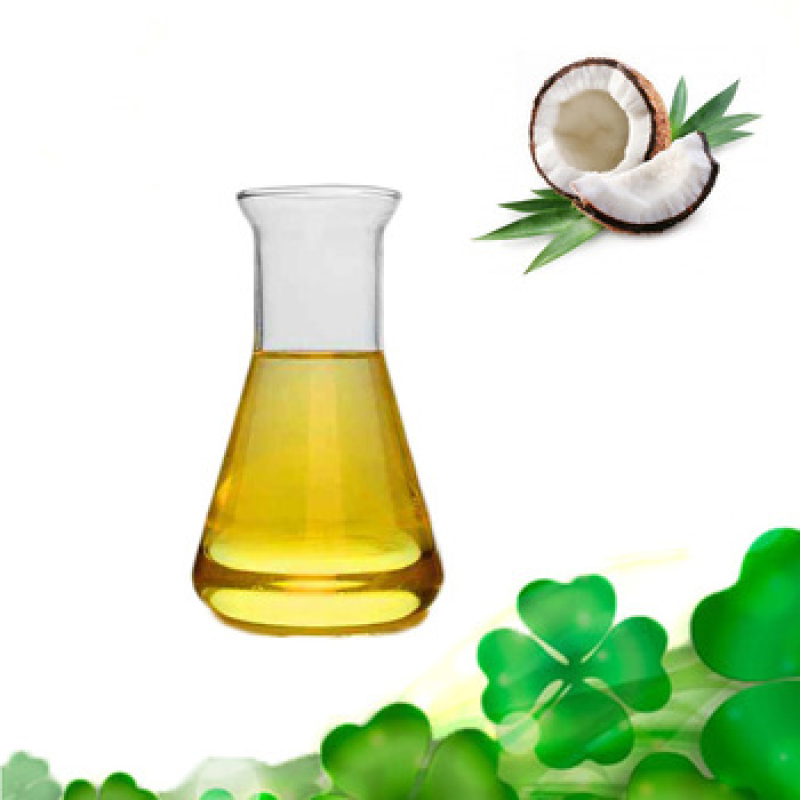Products Description of Direct Pigment Red 122 CAS#980-26-7Pigment Red 122 is an all-around pink, it belongs to Quinacridone chemistry, application covers all kinds of polymers. Comparable with Clariant Pink E and E 01. P.R.122 has higher tinting strength than pigment violet 19, it is with excellent resistance to immigration and heat stability. PR 122 dissolves in its medium and changes color accordingly at low concentrations.
Contact Now
Products Description of Direct Red 23 CAS#3441-14-3 Purple-red powder. Moderately water-soluble, bright red when dissolved in water, its aqueous solution turns light blue when adding dilute sulfuric acid, produces wine-red precipitate when adding concentrated hydrochloric acid, and turns reddish orange-brown when adding concentrated alkali. Slightly soluble in ethanol and orange, insoluble in acetone.
Contact Now
Basic Red 51 CAS#12270-25-6It is a monoazo compound with the chemical name 4 -((1, 3-dimethylimidazole-1-onium-2-diazo)-N, n-dimethylaniline chloride, Or 2 -((4 -(dimethylamino) phenyl) azo)-1, 3-dimethyl-1h-imidazolium chloride, usually a blue to dark purple powder, sometimes may appear lumps.Product Name:Basic Red 51Synonyms:BASIC RED 51;C.I.
Contact Now
Products Description of Copper Chromite CAS#12018-10-9Copper chromite (CuCrO4) is an inorganic compound with the following properties: Appearance: Copper chromite appears as red crystals or powder.
Contact Now
Products Description of PhenetidineCAS#156-43-4Colorless oily flammable liquid. It gradually turns red to brown when exposed to air and sunlight.
Contact Now
Products Description of CALAMINE CAS#8011-96-9Calamine is also known as Lugan Stone, Gan Stone, Lugan Stone, Sheep Liver Stone, Fushui Gan Stone, Luyan Stone, and Dry Stone. It is an irregular block, flat or round, of varying sizes, with a white or light red surface, depressions or small holes, and powdery. It is light and loose, fragile, white or light red in cross section, granular, and has small pores, and is hygroscopic.Calamine is an ore of the carbonate mineral smithsonite. Calamine tastes sweet, flat, warm, and non-toxic.
Contact Now
Products Description of 2,5-Dimethoxybenzaldehyde CAS#93-02-72,5-Dimethoxybenzaldehyde is a colorless crystal produced by methylation reaction with dimethyl sulfate in an alkali aqueous solution.2,5-Dimethoxybenzaldehyde Chemical PropertiesMelting point 46-48 °C (lit.)Boiling point 146 °C/10 mmHg (lit.)density 1.1708 (rough estimate)refractive index 1.5260 (estimate)Fp >230 °Fstorage temp. Keep in dark place,Sealed in dry,Room Temperaturesolubility 795mg/lform Crystalline Powder, Crystals and/or Chunkscolor Yellow to beigeWater Solubili
Contact Now
Products Description of 2,2,6,6-Tetramethylpiperidinooxy CAS#2564-83-22,2,6,6-Tetramethylpiperidinyl oxide, abbreviated as TEMPO, is a piperidine-type nitrogen oxide free radical. TEMPO is an orange-red, easily sublimable crystal or liquid, and is easily soluble in solvents such as water, ethanol, and benzene.
Contact Now
Products Description of ASTRAZON PINK FG CAS#3648-36-0Dark red uniform powder. Dissolves in water to produce bright pink. When dyed at high temperature (120℃), the color does not change. If dyed in sulfuric acid bath, the color changes slightly, and when dyed in formic acid bath, the color does not change. Light fastness level 4.
Contact Now
Products Description of Vitamin E CAS#59-02-9Natural vitamin E is a brown-red or transparent light yellow oily liquid with a mild, special smell and taste. Easily soluble in ethanol, acetone, ether, chloroform or vegetable oil, almost insoluble in water. It has a high boiling point (250°C) and is stable to heat. It oxidizes when exposed to air and light and turns dark red. It has no calories and does not participate in human metabolism. Natural vitamin E has the functions of whitening spots, preventing skin aging, regulating endocrine, and preventing high blood pressure and blood clots.
Contact Now
Products Description of Crystal Violet CAS#548-62-9Gentian violet, also known as crystal violet and basic violet 3, is a commonly used artificial basic dye along with methyl green, neutral red, methylene blue, safranin, hematoxylin, malachite green, methyl violet and basic fuchsin. The dye index number is CIBasicViolet3(42555). It belongs to the triaminotriphenylmethane compound. It has the appearance of dark green powder or flaky crystals with bronze luster.
Contact Now
Products Description of Vitamin B12 CAS#68-19-9Vitamin B12, referred to as VB12, also known as cobalamin, is one of the B vitamins. It is a type of cobalt-containing corrin-type complex organic compound. The trivalent cobalt contained is located in the center of the corrin ring plane similar to porphyrin. It is the largest and most complex vitamin molecule discovered so far, and it is also the only vitamin containing metal ions. Its crystal is red, so it is also called Chemicalbook red vitamin.Plants do not contain VB12 and cannot produce VB12.
Contact Now
Products Description of Cobalt Nitrate CAS#10026-22-9Cobalt nitrate hexahydrate is a red crystalline powder. Solubility: easily soluble in water, ethanol, acetone and methyl acetate, slightly soluble in ammonia. It is mainly used to make catalysts, invisible inks, cobalt pigments, ceramics, sodium cobalt hexanitrite, etc. On October 27, 2017, the World Health Organization's International Agency for Research on Cancer published a preliminary list of carcinogens for reference.
Contact Now
Products Description of Titanocene dichloride CAS#1271-19-8Titanocene dichloride is an organic titanium compound with the chemical formula (η5-C5H5)2TiCl2, often written as Cp2TiCl2. This metallocene is a common reagent in organometallic chemistry and organic synthesis. It is a bright red solid that slowly hydrolyzes in the air.Cp2TiCl2 does not form a "sandwich" structure like ferrocene. Because its four ligands surround a metal center, it forms a tetrahedral structure.
Contact Now
Products Description of Molybdate Orange CAS#12656-85-8 ,also known as Pigment Red 104, is an inorganic pigment that is widely recognized for its vibrant orange hue.
Contact Now
Products Description of Formic acid CAS#64-18-6 Formic acid is an important chemical raw material. It was first discovered by Fisher in 1670. A.S.Marggret first produced pure formic acid in 1749.It was first discovered by distilling red ants, hence the name formic acid. Formic acid is widely found in nature, such as in the secretions of red ants, bees, caterpillars, etc., in the leaves and roots of plants, and in fruits. It is the simplest carboxylic acid. Compared with other fatty carboxylic acids, it has a special structure and is more acidic.
Contact Now
Products Description of Bilirubin CAS#635-65-4This product is mainly derived from the reduction product of heme in hemoglobin through a series of catabolism after the disintegration of aging red blood cells. It is golden yellow or dark reddish brown monoclinic crystal, odorless and tasteless. Soluble in organic solvents such as benzene, chloroform and carbon disulfide; also soluble in hot mixture of ethanol and chloroform; sodium salt is easily soluble in water, but calcium salt, magnesium salt and barium salt are insoluble in water.
Contact Now
Products Description of Direct Pigment Yellow 42 CAS#51274-00-1Pigment yellow 42, also known as Yellow Iron oxide is a yellow powder in the form of an alkaline oxide with comparatively stable chemical properties. It is is insoluble in water and alcohol, slightly soluble in acids but completely dissolves in concentrated hydrochloric acid. When heated to 80℃, it loses water and converts to red ferric oxide. It is used in coating, printing ink and paint, and also as a coloring agent for building material, rubber and paper-making.
Contact Now
Products Description of N,N-Diethyl-p-phenylenediamine sulfate CAS#6283-63-2White or light red crystals. Soluble in water, slightly soluble in alcohol. Easily oxidized to pink.
Contact Now
Products Description of 2,4-Dichloropyridine CAS#26452-80-22,4-Dichloropyridine is mainly used in pharmaceutical and biochemical industries.2,4-Dichloropyridine Chemical PropertiesMelting point -1 °CBoiling point 189-190 °C (lit.) 76-78 °C/23 mmHg (lit.)density 1.37refractive index 1.55-1.554Fp 189-190°Cstorage temp. Inert atmosphere,2-8°Csolubility Chloroformform Yellow to Pale Orange Liquidpka0.12±0.10(Predicted)color Colorless to Red to GreenBRN 108666InChIKeyTYPVHTOETJVYIV-UHFFFAOYSA-NCAS DataBase Reference26452-80-2(CAS DataBase Refer
Contact Now
Products Description of Sulfide Sodium CAS#1313-82-2When sodium polysulfide impurities are present, the sodium sulfide will show different degrees of color changes due to the influence of factors such as the length of the sulfur chain in the sodium polysulfide. Common colors include pink, brownish red, and khaki blocks.
Contact Now
Products Description of Sodium Sulfide CAS#1313-82-2 Sodium sulfide is also known as alkali sulfide, stinking soda, and stinking alkali. The pure product is colorless or slightly purple prismatic crystals at room temperature. Industrial sodium sulfide is often pink, brownish red, or khaki blocks due to impurities. It has the smell of rotten eggs, is corrosive, and toxic. The density is 2.427. It decomposes at 920°C. It is soluble in cold water and easily soluble in hot water.
Contact Now
Products Description of Chromium(VI) oxide CAS#1333-82-0Chromium trioxide is an inorganic compound with the chemical formula CrO3. It is a dark red or dark purple crystalline powder. It is soluble in water, sulfuric acid, nitric acid, ethanol, ether, acetic acid, and acetone. It is mainly used in electroplating industry, pharmaceutical industry, printing industry, tanning and fabric mordant dyeing.On October 27, 2017, the World Health Organization's International Agency for Research on Cancer published a preliminary list of carcinogens for reference.
Contact Now
Products Description of Copper (II) Nitrate Hydrate CAS#10031-43-3Copper nitrate trihydrate is a white powder, easy to deliquesce, easily soluble in water, with a solubility of 45g at 0℃. It can be reprecipitated by adding concentrated nitric acid. It decomposes into nitrogen oxides and copper oxide when red hot, and is decomposed by hydrochloric acid. Common hydrates are hexahydrate Cu(NO3)2·6H2O and trihydrate Cu(NO3)2·3H2O. The former is a blue crystal with a relative density of 2.074.
Contact Now

































